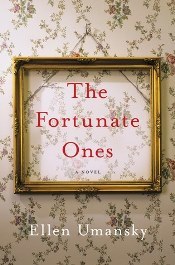
The Kindertransport, the recovery of Nazi-looted art, family ties, and adjustments to great loss: taken individually, these are recurrent themes in literary fiction, but they’re brought together in an original and tremendously moving way in Umansky’s debut novel.
It centers on the separate stories of two women, Rose Zimmer and Lizzie Goldstein, and their connection. Both feel like walking ghosts after their parents’ deaths: Rose, a former child refugee from Vienna living in 1940s Britain; and Lizzie, a lawyer who returns home to contemporary Los Angeles for her father’s funeral.
Lizzie and Rose, now an astute, prickly septuagenarian, develop an unusual friendship. Their families had once owned the same Chaim Soutine expressionist painting, and both had it stolen under traumatic circumstances.
The missing artwork holds great meaning for them, and they ponder its whereabouts, but this multi-layered novel isn’t really a mystery – although it satisfies in that respect. Instead, it’s a gradual revelation of character, and of significant events from the women’s personal histories.
Their journeys are engrossing to follow. Rose’s story is brought forward in time from 1936, illustrating her inner strength, while Lizzie navigates relationships with her sister, her Jewishness, and a surprising new lover. The clarity of detail in Umansky’s writing brings all her scenes alive. She sensitively addresses the complicated issue of survivor’s guilt and leaves readers with a sense of hope.
Some notes:
I wrote this (starred) review for
Booklist, and the edited version was published in the magazine's January issue.
The Fortunate Ones will be published by William Morrow in February in hardcover.
As a sidenote, I found the book's cover art very plain, but what's inside is impressive. I hadn't been familiar with Chaim Soutine or his works before reading the novel; you can read more about him
at the Musée de l'Orangerie. The painting connecting Rose and Lizzie's families (
The Bellhop) is fictional, but I pictured it along the same lines of
this Soutine painting, called
The Groom or
The Bellboy.
 newest »
newest »
 newest »
newest »
 The empty frame on the cover, after one knows of the story of the painting's loss and especially in light of the compelling, if melancholy, strength of Soutine's art, makes sense I guess. BUT, that seems late in the game, as you say! Especially if covers still sell books! From your review, a wonderful story could be overlooked far too easily.
The empty frame on the cover, after one knows of the story of the painting's loss and especially in light of the compelling, if melancholy, strength of Soutine's art, makes sense I guess. BUT, that seems late in the game, as you say! Especially if covers still sell books! From your review, a wonderful story could be overlooked far too easily.





